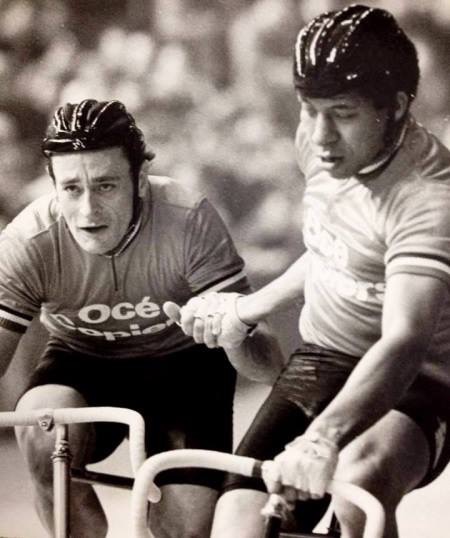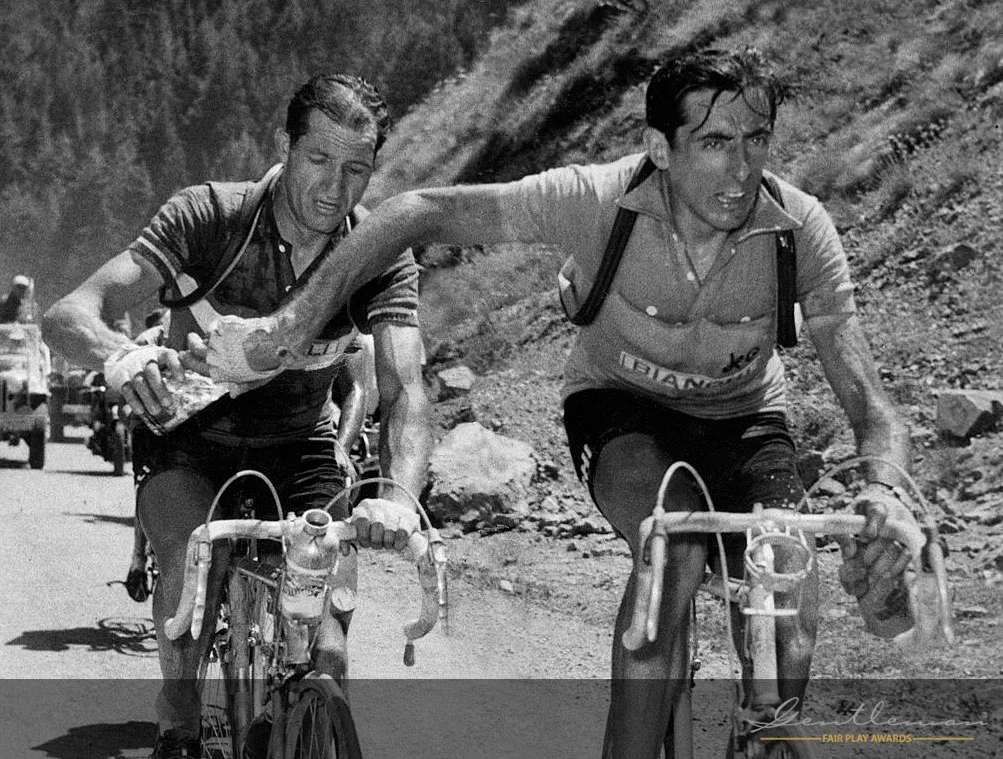“An athletic contest in which participants ‘go queer’ in their heads, and strain their powers until their faces become hideous with the tortures that rack them, is not sport. It is brutality.”
Six Day Women's Racing at the Aquarium in London 1896
Ride Velo recently interviewed Maurice Burton, a British champion of the Six Day Races. But what exactly are the Six Day Races? We decided to investigate the history of this extraordinary track-racing phenomenon, which was reported to leave its contenders peevish, hallucinating and looking like ghosts.
The culture of six day racing was started in London in 1878 by a Mr Davis who backed a professional cyclist named David Stanton in his attempt to ride 1,000 miles round a track, over six consecutive days, riding for 18 hours a day on a Penny Farthing. The Sporting Life newspaper officiated but Mr Stanton went on to complete his challenge in just 73 hours! In the following years, endurance riders regularly covered well over 1,000 miles in the six-day events.
In Victorian times, crazy endurance sporting events were popular with the public, and both men and women competed for pretty big prize money. But the sport became really big in America where it quickly became an established feature of the line up at Madison Square Gardens from 1891 onwards.
In those days, single competing riders would try and stay awake for as long as possible while circling the track for the entire week (save Sunday of course!) Sleeping was kept to a minimum while ‘soigneurs’ would tend to the riders needs, with allegations of amphetamine use being rife. No wonder the riders ended up arguing, swearing and crashing, emerging from the ordeal looking like ghosts with hollowed eyes. And no wonder the audience loved it!
Maurice Burton giving team-mate Gary Wiggins a hand-sling
Laws were passed in 1898 limiting the riders’ suffering to just 12 hours a day, but promoters quickly got round that by introducing a second team mate to keep the race going. The two man tag racing became known as the 'madison' – after Madison Square Gardens. The hand-sling was another trick that began at this time where one rider propels another ahead by pulling or pushing. Prize money leapt to over $1,000 a day for the top riders which attracted many Europeans to the events.
Madison racing crossed the Atlantic with the first race in Toulouse in 1906, but took a while to gain momentum. As the Six Day Races declined in popularity in the States, due to the Depression and superiority of some European riders, track racing became a regular fixture all over the UK and Ireland. Often the venues amounted to no more than a ‘board track’ set up in a marquee. Six day racing remained popular in Germany, Belgium and France except during the Second World War when it was banned by the Nazis.
The Six Day Races in Ghent hark back to Victorian England, with their side shows and singers, although dancing elephants are off the menu today
Nowadays, Six Day Races are a spectacular affair in Europe, complete with accompanying fun fairs, restaurants, live music and night clubs. The best competitors are reported to have demanded €75,000 in prize money for a week's work, with additional income available for singing! Ghent in Belgium has become the idealogical home of the Six Day Races, where revellers are allowed to party in the centre of the circuit, dressing up, and downing beers and hotdogs as they watch the action. At the 2am finish, they pile into a nightclub to wait for the following day's action.
Lea Valley Olympic Velodrome where racing is more of a family occasion!
And finally last October, after a break of some 35 years, the Six Day Races returned to where they first started, in London, when the Olympic Velodrome hosted the spectacular event just five miles from it's birthplace in Islington. In addition to the two-man madison, there were points for intermediate sprints, the exciting elimination race where the last man gets dropped, and of course the derny, where the riders fly around in the slipstream of a munchin-like man on a motorbike. This time it's a family occasion, but hopefully one to be repeated regularly. London's glad to have you home again, Six Day, even if we don't party like the Victorians any more!
Next week we meet Maurice Burton and learn all about his amazing career as a Six Day Racer in Belgium in the 1970s and 80s. It was a crazy life - don't miss it! All historical images courtesy of sixday.org.uk and Maurice Burton.



















































